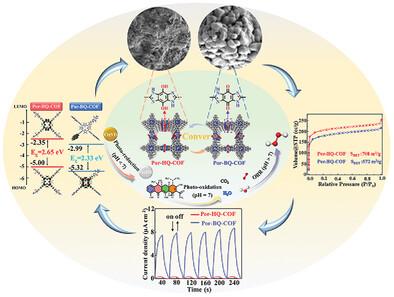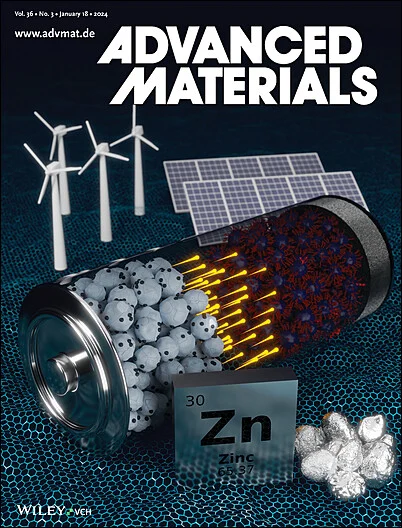A Covalent Organic Framework as Photocatalyst for Smart Conversion Between Photooxidation and Photoreduction and H2O2 Production in Full pH Environment
IF 27.4
1区 材料科学
Q1 CHEMISTRY, MULTIDISCIPLINARY
引用次数: 0
Abstract
Developing multifunctional photocatalysts with intelligent self-adjusting is of great significance in the photocatalytic process. Herein, a smart covalent organic framework (Por-HQ-COF) with a phenol-quinone conversion structure with pH changes is constructed for photooxidation, photoreduction, and H2O2 production. As a smart photocatalyst, Por-HQ-COF can convert into Por-BQ-COF intelligently with a trigger including solution pH, and vice versa. The reconstruction of phenol-quinone conversion not only significantly alters the morphologies and the specific surface areas of the COF, but also leads to an entirely change in the band energy and charge distribution to influence photoelectric properties. As a result, under acidic conditions, Por-BQ-COF converts into Por-HQ-COF automatically and can photoreduce high concentration Cr(VI) to Cr(III) efficiently. Under neutral conditions, the superoxide anions (·O2−) initiate the Por-HQ-COF reconstruction into Por-BQ-COF to accelerate photooxidation to degrade high-concentration TC. Under alkaline conditions, Por-HQ-COF converts into Por-BQ-COF, can effectively photosynthesize H2O2 (1525 µmol h−1 g−1 at λ > 420 nm) in the absence of any sacrificial reagents, and reveal the strong alkalinity lower the energy barrier of hydrogen extraction from H2O and clarify active sites for H2O2 production. This work provides a new strategy for developing smart photocatalysts and fulfill the application across the full pH environment.

求助全文
约1分钟内获得全文
求助全文
来源期刊

Advanced Materials
工程技术-材料科学:综合
CiteScore
43.00
自引率
4.10%
发文量
2182
审稿时长
2 months
期刊介绍:
Advanced Materials, one of the world's most prestigious journals and the foundation of the Advanced portfolio, is the home of choice for best-in-class materials science for more than 30 years. Following this fast-growing and interdisciplinary field, we are considering and publishing the most important discoveries on any and all materials from materials scientists, chemists, physicists, engineers as well as health and life scientists and bringing you the latest results and trends in modern materials-related research every week.
 求助内容:
求助内容: 应助结果提醒方式:
应助结果提醒方式:


